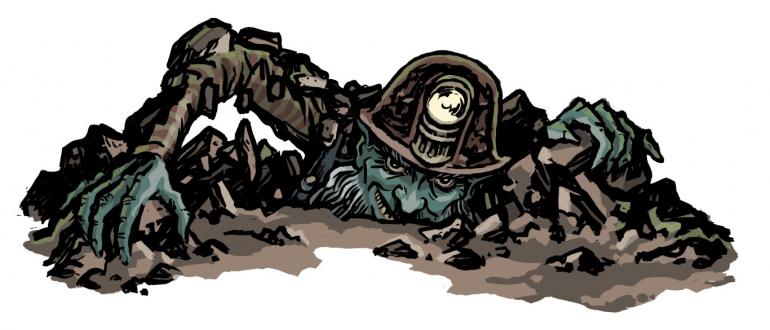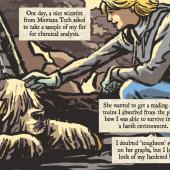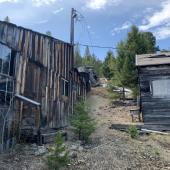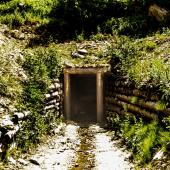Do Tommyknockers Lurk In the Darkness?

Graphic by Rob Rath
Everyone thinks that something lurks in the darkened places of the earth. In Bolivia and Peru, they’re called muki. In Germany, mines are filled with the kobold, who gave Cobalt its name, and the Welsh have the Bwca, close relative of the leprechaun and brownie, cousin to goblins and the trolls. But in America, they’re typically known as the Tommyknocker.
Across nearly every culture, they’re described as diminutive, bearded creatures similar to men, but with longer arms, bigger heads, and some degree of supernatural powers. They dressed in imitation of miners, possessed of their own miniature outfit, even sometimes helmets and head lamps. Some miners thought they were helpful, “knocking” on the walls of mines as a sign to miners that they were about to collapse. Others thought that the spectral knocking they heard was a sign that there was a particularly rich vein. A third camp felt the Tommyknockers were malicious, and that the sounds that signified their presence were the result of creatures knocking out supports and causing cave-ins.
In the balance, they were considered beneficial company, but it came at the cost of putting up with their trickster tendencies. They would frequently make off with unattended tools, and were blamed for the day-to-day frustrations of mining, although the effects could be at least somewhat ameliorated by frequent offerings (as of the crust of a beef pasty).
They first came to America with Cornish miners, who called them Cousin Jacks, and in the crucible of the American melting pot, they metamorphosed into something else. Many miners came to think of them as something closer to spirits, the ghosts, perhaps, of men who had died in the tunnels.

And why not? After all, to say mining was a dangerous profession is putting it very lightly—when you consider the attendant illnesses, accidents, and disasters, mining killed tens of thousands of Montanans. For the men who worked in the mines every day, on whom lay the burden of living under the ever-present risk of death, the idea of being protected (or terrorized) by the ghosts of fellow miners would have had a special poignancy.
Moved by the inscrutable whims of ghosts and goblins, Tommyknockers continued to haunt the men underground until well into the twentieth century, when belief in them began to wane.
Some say that the belief in Tommyknockers began to die out because of an increase in education, as scientific rationalism replaced superstition. But there might be something to be said for hedging your bets.
At least, that’s what Walker, one of the tour guides at the World Mining Museum in Butte, does. He takes Jolly Ranchers into the darkness of the Orphan Girl mine every time he goes down there. Standing there, amid the drip-drip of unseen water, smelling the sulfurous air and watching dust motes hang in the glare of his flashlight, he unwraps the candy and tosses one into the darkness. He told us that he knows they’re not as good as a pasty, but figures that just about everybody loves sweets.
So far, he and the Tommyknockers have maintained a respectful, if cautious, relationship, so he must be right.












Leave a Comment Here